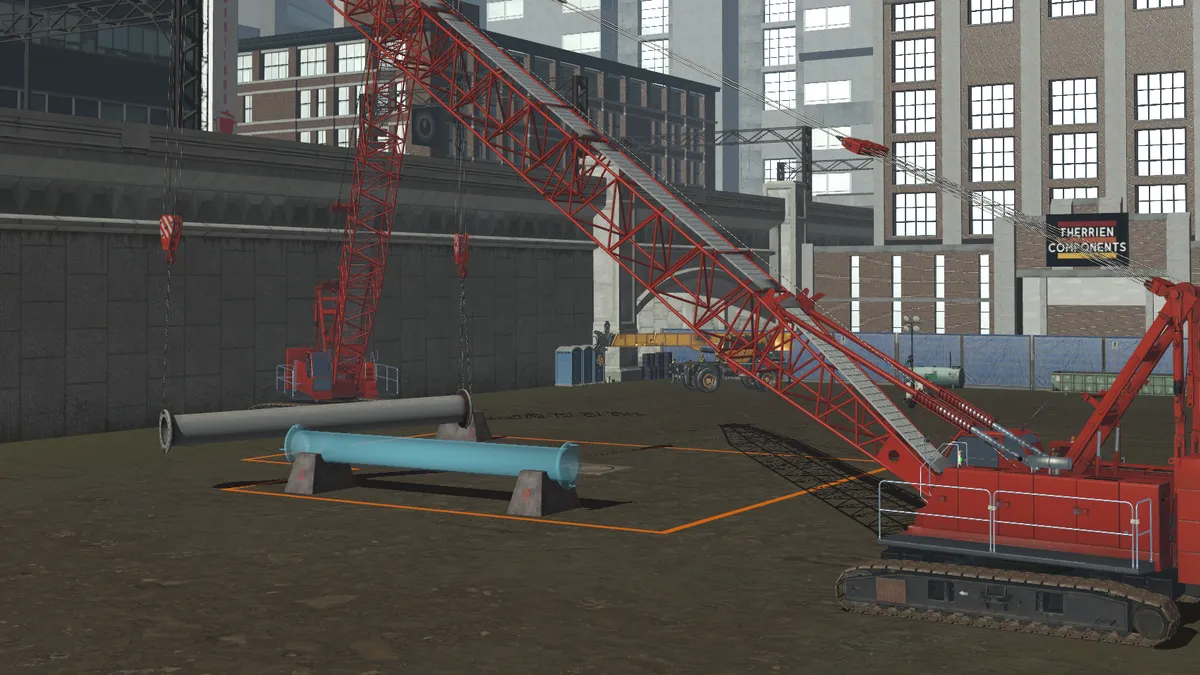Technologies like BIM, drones, virtual reality and real-time workflow software have made an entrance that will forever alter the scope of the construction industry. Every few weeks, Construction Dive provides a roundup of the latest technology product announcements that promise to boost productivity by saving contractors time, money and labor. To view the entire series, click here.
CM Labs bringing crane training to any classroom or office
CM Labs Simulations last week announced that it is entering the augmented reality space, building on its offering of Vortex full-scale crane simulation machines for contractors to provide a virtual model of training software that can be used almost anywhere.
The software uses AR technology to bring a digital crane to the classroom by way of mobile devices, through which trainees can visualize a model physically displayed in front of them and “interact with it, conduct walkarounds and learn the fundamentals of machine inspection,” according to a Jan. 29 press release.
“Once trainees are familiar with the equipment, they can get behind the controls of an equipment simulator and work through the built-in training curriculum or focus on the development of specific operator skills,” the Montreal, Canada-based firm said of its immersive AR program being paired with its physical training products.
CM Labs will also soon display, for the first time, its training package that allows two trainees to “work simultaneously and cooperatively to complete a crawler crane lifting exercise” and allows multiple people work together on tasks such as “providing hand signals to the operators … supervising the operation, or injecting challenges,” into a training scenario. Both the AR suite and the collaborative training elements will be on display at CM Labs' booth at the Bauma 2019 construction and material trade fair in Munich, Germany, in April.
Autodesk optimizes Revit for the cloud
Autodesk recently released Revit 2019.2, its first Revit update of the year, which is marked by a new focus on cloud computing.
Cloud Models for Revit synchronizes changes between a user's desktop and BIM 360 automatically and stores files in the cloud, without requirng users to manually upload them to the Worksharing platform.
"Extending the ability to work with this cloud-optimized format to individual users working on non-workshared models provides a consistent experience for all Revit users," Autodesk said in its announcement.
Another feature targeted to customers working with concrete is Extended CAM Export, which better streamlines the design-to-fabrication process for cast-in-place and precast structures by allowing users to export information associated with precast assemblies. Other enhancements are aimed at a more intuitive and consistent user experience.
A 'digital home' for American tradespeople
A new mobile application aiming to create a "digital home" for tradespeople across the U.S. is quickly gaining momentum.
After a soft launch in January with 3,500 users, Trade Hounds has grown to a user base of more than 16,000 representing every state, according to the company. On an Apple or Google Play platform, construction workers across the skilled trades can share advice and stories, connect with others in their industry and showcase work photos. The app has a strong appeal with millennials and younger generations in the trades, the company says, with nearly 60% of new membership age 35 or below.
Trade Hounds secured $1.5 million in seed funding last year and has partnered with about a dozen contractors and subcontractors.
Multivista, DroneDeploy debut 'robust' integration
Construction documentation services provider Multivista recently announced a partnership with cloud-based commercial drone platform DroneDeploy — its "most robust and dynamic integration" to date, according to Multivista CTO Graham Twigg.
“We’ve created a platform that serves up our captured aerial data in the most appropriate form for each project stakeholder — those who need to inspect can view, those who need to quantify can measure, and those who need to model or report can export into dozens of formats," he said in a press release.
Multivista users can access an array of drone data resources powered by DroneDeploy, according to the announcement, and use Multivista-captured, high-definition aerial maps to determine distance, area, volume, elevation and other details from the data collected. The integration also allows users to export 2D or 3D file formats for modeling applications or other workflows.














